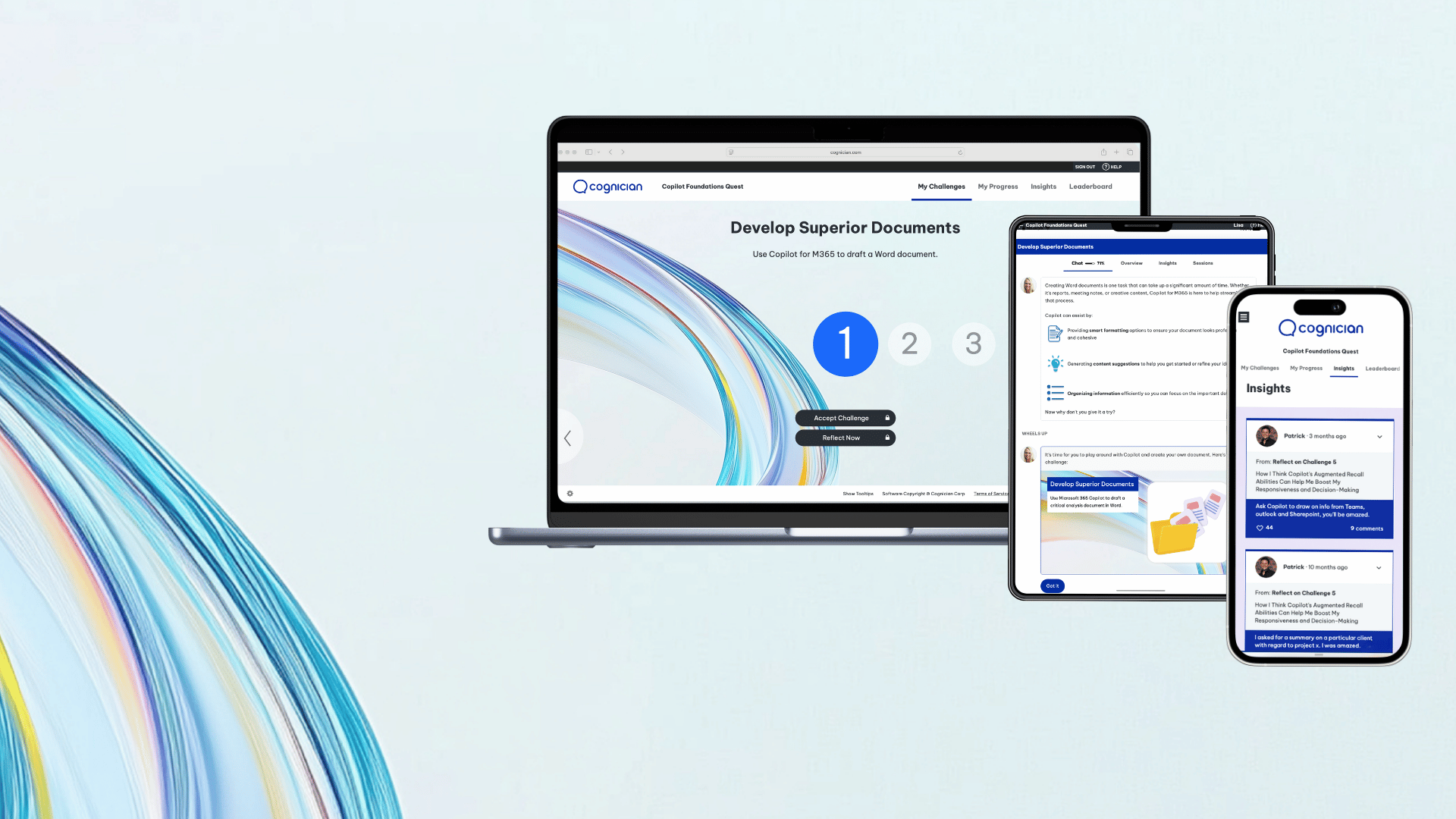Effective organizational transformation requires focusing on desired outcomes rather than merely acquiring content. Investing in behaviors and measurable results leads to meaningful change and better return on learning and development efforts.
When I speak with leaders driving transformation in large organizations, the conversation often starts with "What content do we need?" It's an easy default: buying a new training course or library of videos feels like taking action. But in reality, content is just a means to an end, and that end is your target outcome. Too often, I see teams fall into what we call 'content seduction' – becoming so enamored with learning content that they lose sight of the real goal: changing behavior and improving performance.
The Content Seduction Trap vs. Outcome Focus
In a digital transformation, for example, a company might invest heavily in training sessions on Microsoft Copilot, thinking it will drive adoption. Yet what they truly need isn't slides and workshops about Copilot – it's day-to-day Copilot usage across teams and use cases. In a people transformation effort, an organization may roll out a shiny new leadership curriculum. But the real win is having leaders who consistently exhibit the desired behaviors – like active listening or coaching their staff – not just having employees attend leadership courses. In both cases, the content alone won't create the change.
So how do you avoid the content seduction trap? Start with the end in mind. Ask: "What outcome do we want to achieve?" Maybe it's a 50% increase in Copilot-supported projects, or managers adopting a specific coaching technique in weekly meetings. Define those outcomes clearly first. Then work backward to design the minimal content and, more importantly, the experiences and support needed to achieve them. This might include on-the-job practice, challenges, peer feedback, and metrics to track progress.
One design approach we use at Cognician is our outcomes-focused activation framework. It's built on the idea that real learning happens through action, reflection, and social reinforcement, not just information download. For instance, in our Copilot adoption programs, we ask participants to try small Copilot-driven tasks (action), reflect on what worked, and share insights with colleagues (reflection and social learning). This keeps everyone focused on changing their own behavior and changing ways of working as a group. Content (like tip sheets or videos) is still used – but only in service of the outcome, never as the end goal.
From Information to Activation
By shifting your mindset from "What content do we need?" to "What outcome do we need?", you empower your organization to achieve its transformation goals. You'll spend less time and budget on content for content's sake and more on initiatives that get people doing things differently. The result? More leaders leading, more employees using the right tools, and more tangible impact from your L&D investments.
Next time you plan a change initiative, resist the pull of buying the biggest training package. Instead, pinpoint the behaviors and results that define success and concentrate your efforts there. In our experience, when you invest in outcomes, the outcomes pay you back – in measurable, meaningful change that no off-the-shelf content library can guarantee.
Curious about how to make this shift? I'd love to discuss how an outcomes-first approach, like we use at Cognician, can help your team achieve real results.



.png)

